-
 Bitcoin
Bitcoin $108,489.6704
1.13% -
 Ethereum
Ethereum $2,502.0528
2.92% -
 Tether USDt
Tether USDt $1.0002
0.00% -
 XRP
XRP $2.1941
0.51% -
 BNB
BNB $655.3375
1.00% -
 Solana
Solana $151.5977
1.27% -
 USDC
USDC $0.9999
0.00% -
 TRON
TRON $0.2768
0.32% -
 Dogecoin
Dogecoin $0.1676
2.86% -
 Cardano
Cardano $0.5675
0.98% -
 Hyperliquid
Hyperliquid $40.6109
7.48% -
 Bitcoin Cash
Bitcoin Cash $500.7746
2.09% -
 Sui
Sui $2.8328
2.03% -
 Chainlink
Chainlink $13.4452
1.26% -
 UNUS SED LEO
UNUS SED LEO $9.1623
0.39% -
 Avalanche
Avalanche $18.2267
2.24% -
 Stellar
Stellar $0.2382
0.00% -
 Toncoin
Toncoin $2.8885
1.68% -
 Shiba Inu
Shiba Inu $0.0...01159
0.91% -
 Litecoin
Litecoin $87.1827
0.88% -
 Hedera
Hedera $0.1511
2.90% -
 Monero
Monero $315.4992
-0.59% -
 Polkadot
Polkadot $3.4663
2.34% -
 Bitget Token
Bitget Token $4.6118
-0.65% -
 Dai
Dai $1.0000
-0.01% -
 Ethena USDe
Ethena USDe $1.0003
0.02% -
 Uniswap
Uniswap $7.2989
4.69% -
 Pepe
Pepe $0.0...01003
5.73% -
 Aave
Aave $275.5616
7.15% -
 Pi
Pi $0.5181
-2.49%
Is it credible if MACD bottom diverges but the volume is low?
MACD bottom divergence with low volume may signal a weak bullish reversal, as declining momentum lacks strong market participation.
Jun 30, 2025 at 11:00 am
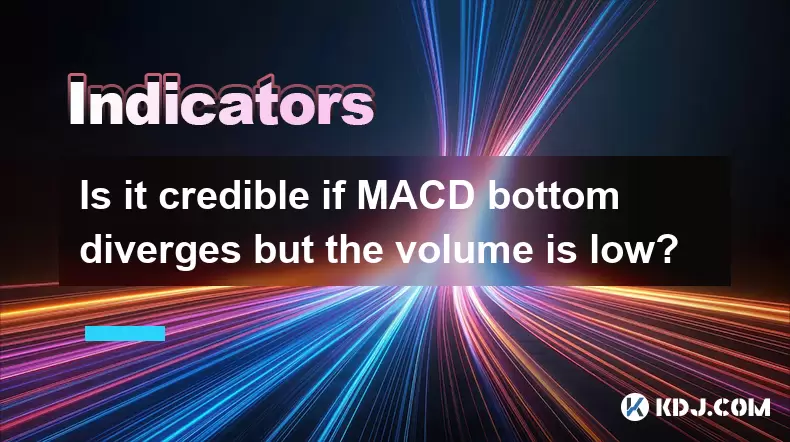
Understanding MACD Bottom Divergence
MACD (Moving Average Convergence Divergence) is a popular technical analysis tool used by traders to identify potential trend reversals. A bottom divergence occurs when the price makes a lower low, but the MACD indicator forms a higher low. This suggests that momentum may be shifting upwards despite the continued downward price movement. Traders often interpret this as a signal of an upcoming bullish reversal.
However, in isolation, MACD divergence is not always reliable. It needs to be confirmed with other indicators or market context. The key question arises: what if there's a bottom divergence but volume remains low?
The Role of Volume in Confirming Divergence Signals
Volume plays a critical role in confirming any technical signal, including MACD divergences. In general, rising volume during a price move confirms strength, while low or declining volume suggests weakness in the current trend. When a MACD bottom divergence appears but is accompanied by low trading volume, it raises doubts about the credibility of the reversal signal.
Low volume indicates that fewer traders are participating in the move, which could mean that institutional players aren't actively buying or selling. Therefore, even though the MACD shows a divergence, the lack of volume support may suggest that the reversal lacks conviction and might not lead to a significant uptrend.
How to Interpret Low Volume During MACD Divergence
When analyzing a situation where MACD bottom divergence coincides with low volume, several factors come into play:
- Market Sentiment: Low volume may indicate indecision among traders. Bulls may not be aggressive enough to push prices higher, and bears may not be fully committed to pushing them lower.
- Liquidity Conditions: In illiquid markets or during off-peak trading hours, volume can naturally be lower, making it harder to draw strong conclusions from volume-based signals.
- Timeframe Consideration: On smaller timeframes like 1-hour or 15-minute charts, volume fluctuations are more common and less reliable compared to daily or weekly charts.
Therefore, interpreting low volume during a MACD divergence requires careful evaluation of the broader market environment and timeframe being analyzed.
Combining Other Indicators for Confirmation
To assess whether a MACD bottom divergence with low volume is credible, traders should consider incorporating additional tools:
- Relative Strength Index (RSI): If RSI is also showing divergence and is near oversold levels (below 30), it adds weight to the potential reversal.
- Price Action Analysis: Look for bullish candlestick patterns such as hammer candles or engulfing bars that coincide with the divergence.
- Trendline Breaks or Moving Averages: A break above a key resistance level or a moving average like the 20-day EMA can confirm that the downtrend is losing steam.
- On-Balance Volume (OBV): This volume-based indicator can help track accumulation or distribution over time, offering insights into whether smart money is entering or exiting.
Using these complementary tools can provide a clearer picture of whether the divergence is worth acting on.
Practical Steps to Evaluate MACD Divergence with Low Volume
If you're facing a scenario where MACD bottom divergence appears but volume is low, follow these steps:
- Analyze multiple timeframes: Check if the divergence appears consistently across different chart intervals.
- Look for confluence: Combine with other indicators like RSI or Bollinger Bands to see if they align with the potential reversal.
- Observe candlestick formations: Bullish reversal patterns increase the probability of a valid signal.
- Wait for confirmation: Instead of entering immediately, wait for a breakout or a close above a key level to avoid false signals.
- Use stop-loss orders: Protect your position in case the divergence fails and the downtrend continues.
By following these practical steps, traders can better manage risk and improve their decision-making process when dealing with ambiguous signals like MACD divergence with low volume.
Frequently Asked Questions
Q1: Can MACD divergence work effectively in sideways markets?
Yes, MACD divergence can still occur in sideways or range-bound markets. However, its effectiveness depends on the presence of clear swing highs and lows. In choppy conditions, false divergences may appear frequently, so traders should use additional filters like volume or volatility indicators.
Q2: Does volume matter more than MACD in crypto trading?
Volume provides context to price action and indicator signals. While MACD offers insights into momentum shifts, volume helps validate whether those shifts are supported by real market participation. In fast-moving crypto markets, both are important, but volume often acts as a confirmation tool rather than a standalone signal.
Q3: Should I ignore all MACD divergences if volume is low?
Not necessarily. Some divergences with low volume may still result in short-term bounces or consolidation phases. However, traders should treat them with caution and look for additional signs before committing capital. It’s wise to view low-volume divergences as potential setups, not confirmed entries.
Q4: How does time frame affect the reliability of MACD divergence and volume?
Shorter timeframes tend to generate more noise and false signals, especially regarding volume spikes and divergences. Longer timeframes like daily or weekly charts offer more reliable readings because they smooth out volatility and reflect broader market sentiment. Always cross-check divergence signals across multiple timeframes for better accuracy.
Disclaimer:info@kdj.com
The information provided is not trading advice. kdj.com does not assume any responsibility for any investments made based on the information provided in this article. Cryptocurrencies are highly volatile and it is highly recommended that you invest with caution after thorough research!
If you believe that the content used on this website infringes your copyright, please contact us immediately (info@kdj.com) and we will delete it promptly.
- Unlock Crypto Riches: Mining Platforms & Starter Bonuses - Your Gateway to Digital Gold!
- 2025-06-30 22:30:11
- Dogecoin, Cloud Mining, and Risk Alerts: Navigating the Meme Minefield
- 2025-06-30 22:30:11
- Ric Edelman's Bold Crypto Allocation: A Financial Advisor's Perspective
- 2025-06-30 22:50:12
- Bitcoin Layer-2 Presale Heats Up: Is HYPER the Next Big Thing?
- 2025-06-30 22:50:12
- Bitcoin's Bull Run: Network Activity Tells a Different Story
- 2025-06-30 22:55:12
- SpacePay, Altcoins & Investing in 2025: What's the Buzz?
- 2025-06-30 23:10:12
Related knowledge
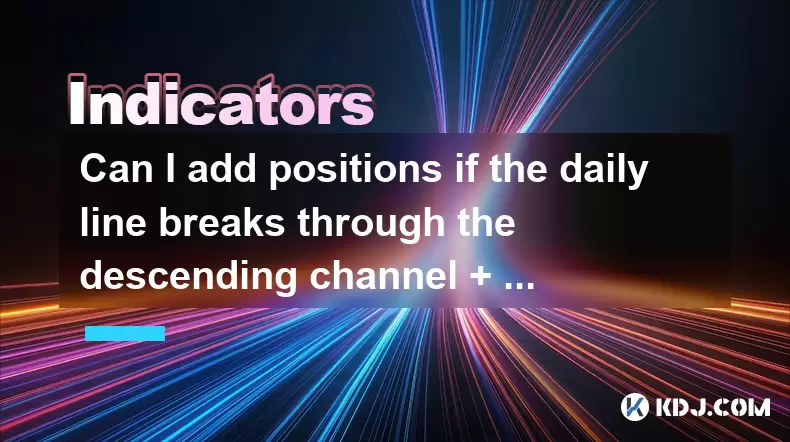
Can I add positions if the daily line breaks through the descending channel + the 30-minute moving average is in a bullish arrangement?
Jun 30,2025 at 11:00pm
Understanding the Descending Channel BreakoutWhen a daily line breaks through a descending channel, it indicates a potential shift in market sentiment from bearish to bullish. A descending channel is formed by drawing two parallel trendlines, where the upper trendline connects the lower highs and the lower trendline connects the lower lows. A breakout o...
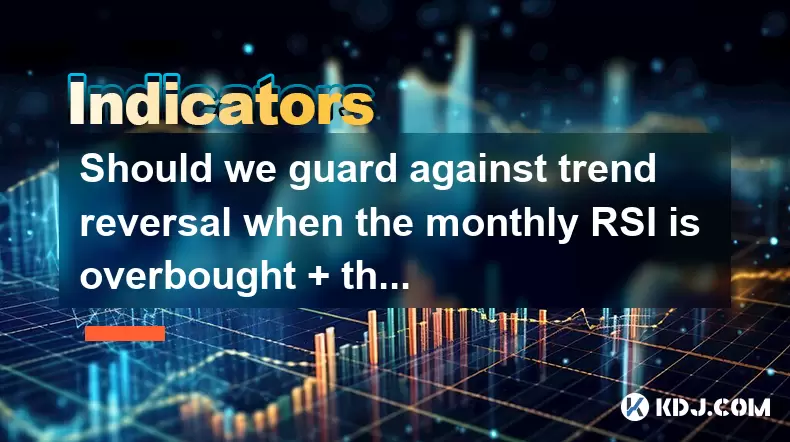
Should we guard against trend reversal when the monthly RSI is overbought + the weekly line has a long upper shadow?
Jun 30,2025 at 11:35pm
Understanding RSI Overbought Conditions in CryptocurrencyThe Relative Strength Index (RSI) is a momentum oscillator commonly used in technical analysis to identify overbought or oversold conditions in an asset. When the monthly RSI of a cryptocurrency reaches above 70, it is generally considered overbought, suggesting that the asset may be due for a pul...
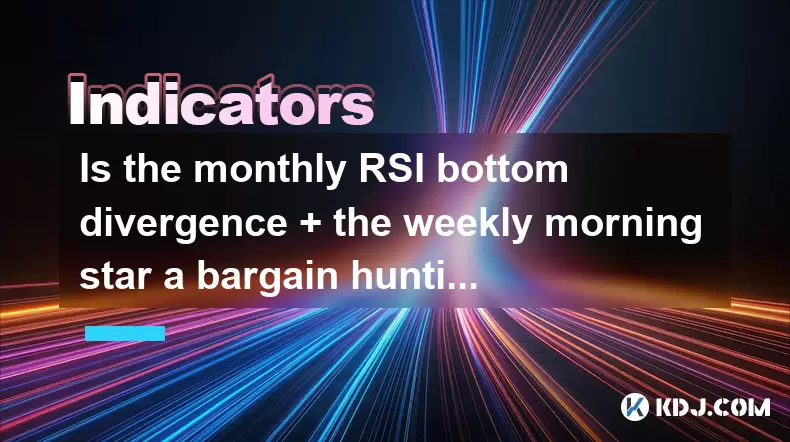
Is the monthly RSI bottom divergence + the weekly morning star a bargain hunting opportunity?
Jun 30,2025 at 09:57pm
Understanding RSI Bottom Divergence in Monthly TimeframesThe Relative Strength Index (RSI) is a momentum oscillator commonly used to identify overbought or oversold conditions in the market. When traders refer to a monthly RSI bottom divergence, they're observing a situation where the price makes a lower low, but the RSI makes a higher low on the monthl...
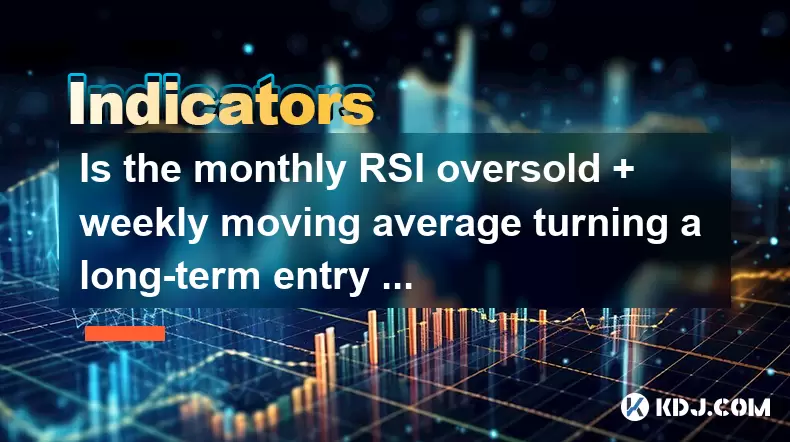
Is the monthly RSI oversold + weekly moving average turning a long-term entry signal?
Jun 30,2025 at 11:42pm
Understanding RSI and Its Role in Cryptocurrency TradingThe Relative Strength Index (RSI) is a momentum oscillator commonly used by traders to identify overbought or oversold conditions in the market. In the context of cryptocurrency, where volatility reigns supreme, understanding how RSI behaves on different timeframes becomes crucial. When the monthly...
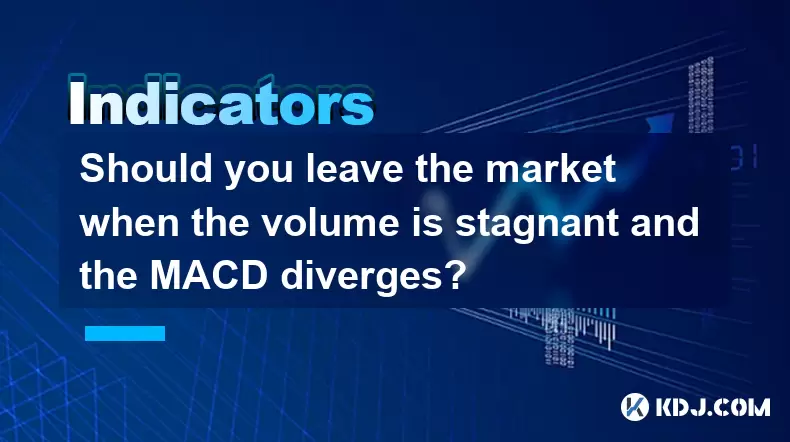
Should you leave the market when the volume is stagnant and the MACD diverges?
Jun 30,2025 at 09:36pm
Understanding Volume Stagnation in Cryptocurrency TradingIn the realm of cryptocurrency trading, volume plays a crucial role in determining the strength of price movements. When volume remains stagnant over an extended period, it suggests that neither buyers nor sellers are showing strong conviction. This often leads to sideways movement or consolidatio...
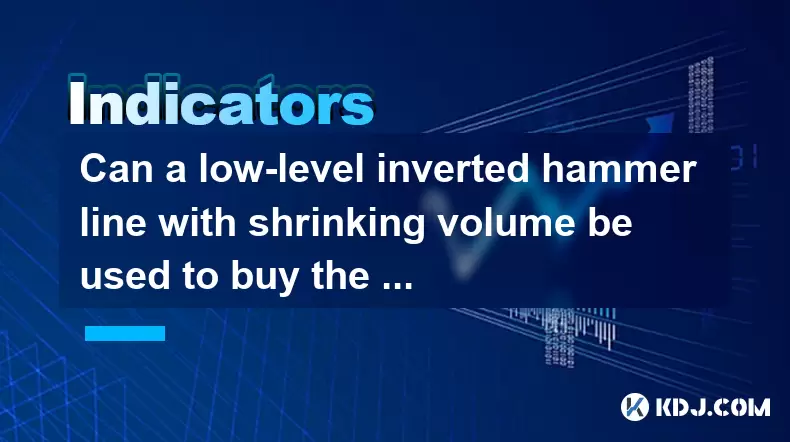
Can a low-level inverted hammer line with shrinking volume be used to buy the bottom?
Jul 01,2025 at 12:08am
Understanding the Low-Level Inverted Hammer LineA low-level inverted hammer line is a candlestick pattern that typically appears at the bottom of a downtrend. It consists of a small real body near the top of the trading range with a long upper shadow and little or no lower shadow. This formation suggests that buyers attempted to push prices higher but w...

Can I add positions if the daily line breaks through the descending channel + the 30-minute moving average is in a bullish arrangement?
Jun 30,2025 at 11:00pm
Understanding the Descending Channel BreakoutWhen a daily line breaks through a descending channel, it indicates a potential shift in market sentiment from bearish to bullish. A descending channel is formed by drawing two parallel trendlines, where the upper trendline connects the lower highs and the lower trendline connects the lower lows. A breakout o...

Should we guard against trend reversal when the monthly RSI is overbought + the weekly line has a long upper shadow?
Jun 30,2025 at 11:35pm
Understanding RSI Overbought Conditions in CryptocurrencyThe Relative Strength Index (RSI) is a momentum oscillator commonly used in technical analysis to identify overbought or oversold conditions in an asset. When the monthly RSI of a cryptocurrency reaches above 70, it is generally considered overbought, suggesting that the asset may be due for a pul...

Is the monthly RSI bottom divergence + the weekly morning star a bargain hunting opportunity?
Jun 30,2025 at 09:57pm
Understanding RSI Bottom Divergence in Monthly TimeframesThe Relative Strength Index (RSI) is a momentum oscillator commonly used to identify overbought or oversold conditions in the market. When traders refer to a monthly RSI bottom divergence, they're observing a situation where the price makes a lower low, but the RSI makes a higher low on the monthl...

Is the monthly RSI oversold + weekly moving average turning a long-term entry signal?
Jun 30,2025 at 11:42pm
Understanding RSI and Its Role in Cryptocurrency TradingThe Relative Strength Index (RSI) is a momentum oscillator commonly used by traders to identify overbought or oversold conditions in the market. In the context of cryptocurrency, where volatility reigns supreme, understanding how RSI behaves on different timeframes becomes crucial. When the monthly...

Should you leave the market when the volume is stagnant and the MACD diverges?
Jun 30,2025 at 09:36pm
Understanding Volume Stagnation in Cryptocurrency TradingIn the realm of cryptocurrency trading, volume plays a crucial role in determining the strength of price movements. When volume remains stagnant over an extended period, it suggests that neither buyers nor sellers are showing strong conviction. This often leads to sideways movement or consolidatio...

Can a low-level inverted hammer line with shrinking volume be used to buy the bottom?
Jul 01,2025 at 12:08am
Understanding the Low-Level Inverted Hammer LineA low-level inverted hammer line is a candlestick pattern that typically appears at the bottom of a downtrend. It consists of a small real body near the top of the trading range with a long upper shadow and little or no lower shadow. This formation suggests that buyers attempted to push prices higher but w...
See all articles

























































































